Florian Neufeldt
24.02.2017 – 29.04.2017
Exhibition Views

Stray Currents, installation view (ground floor) 
Stray Currents, installation view (basement) 
Stray Currents, installation view (basement) 
Stray Currents, installation view (basement) 
Stray Currents, installation view (basement) 
Stray Currents, installation view (basement)
Works

Ground (So you grab a piece of something that you think is going to last), 2017, installation, handrail, cable, environmental dimensions 
Ground (So you grab a piece of something that you think is going to last), 2017, installation, handrail, cable, environmental dimensions, (details) 
Ground (So you grab a piece of something that you think is going to last), 2017, installation, handrail, cable, environmental dimensions, (details) 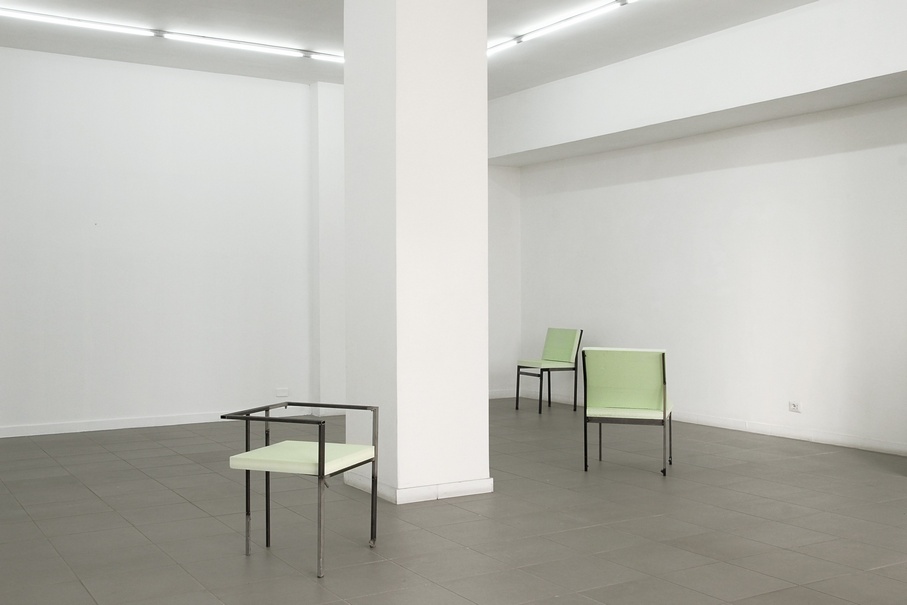

Live Wires #1, 2017, black and white photo on dibond, framed without glass, (cm 60 x 40), chair (cm 80 x 40 x 50) 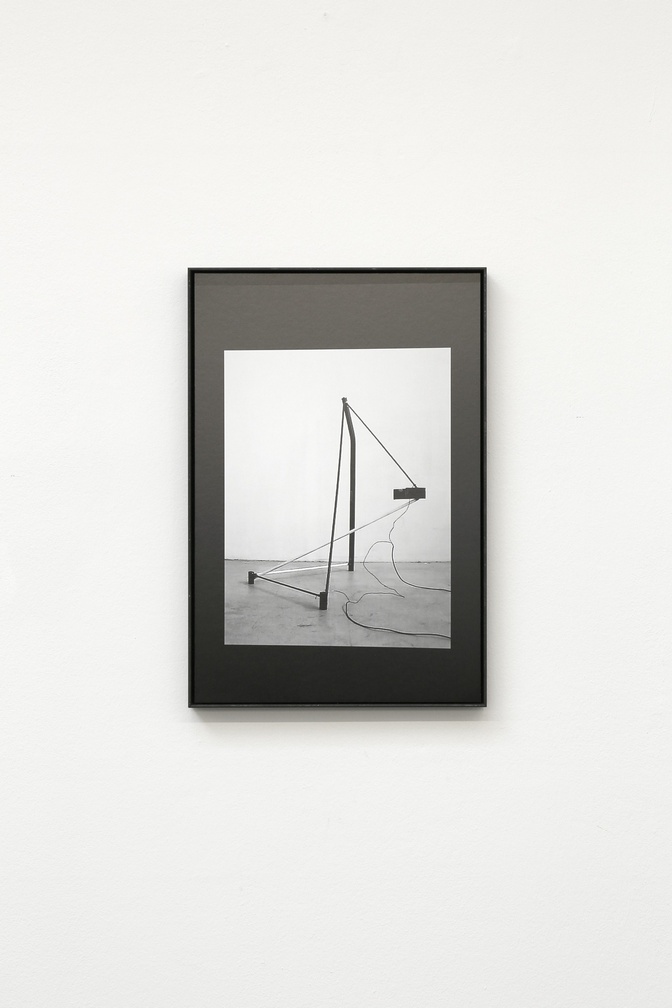
Live Wires #1, 2017, black and white photo on dibond, framed without glass, (cm 60 x 40), chair (cm 80 x 40 x 50) 
Live Wires #1, 2017, black and white photo on dibond, framed without glass, (cm 60 x 40), chair (cm 80 x 40 x 50) 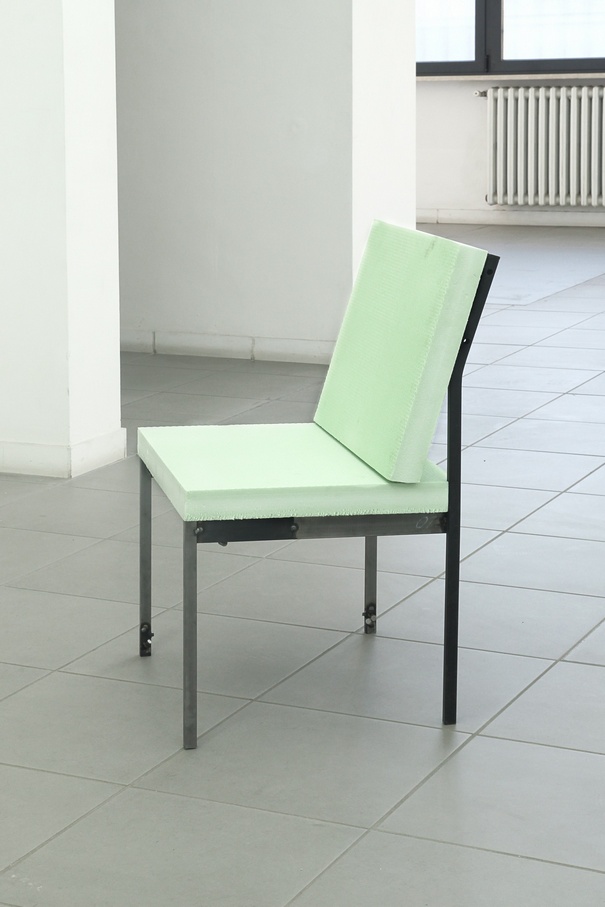
Live Wires #3, 2017, black and white photo on dibond, framed without glass, (cm 60 x 40), chair (cm 80 x 40 x 50) 
Live Wires #3, 2017, black and white photo on dibond, framed without glass, (cm 60 x 40), chair (cm 80 x 40 x 50) 
Live Wires #3, 2017, black and white photo on dibond, framed without glass, (cm 60 x 40), chair (cm 80 x 40 x 50) 
Live Wires #3, 2017, black and white photo on dibond, framed without glass, (cm 60 x 40), chair (cm 80 x 40 x 50) 
Live Wires #3, 2017, black and white photo on dibond, framed without glass, (cm 60 x 40), chair (cm 80 x 40 x 50) 
Live Wires #3, 2017, black and white photo on dibond, framed without glass, (cm 60 x 40), chair (cm 80 x 40 x 50) 
Stray currents #1, 2017, metal box, LED-panel (cm 59,2 x 59,2), transformer, cable, steel wire, cm 37 x 65,5 x 45,5 
Stray currents #2, 2017, table racks, LED-panel (cm 59,2 x 59,2), driver, cable, steel wire, cm 78 x 43 x 41,5 
Stray currents #2, 2017, table racks, LED-panel (cm 59,2 x 59,2), driver, cable, steel wire, cm 78 x 43 x 41,5 
Stray currents #3, 2017, table racks, LED-panel (cm 59,2 x 59,2), driver, cable, steel wire, cm 75,7 x 21 x 59,7 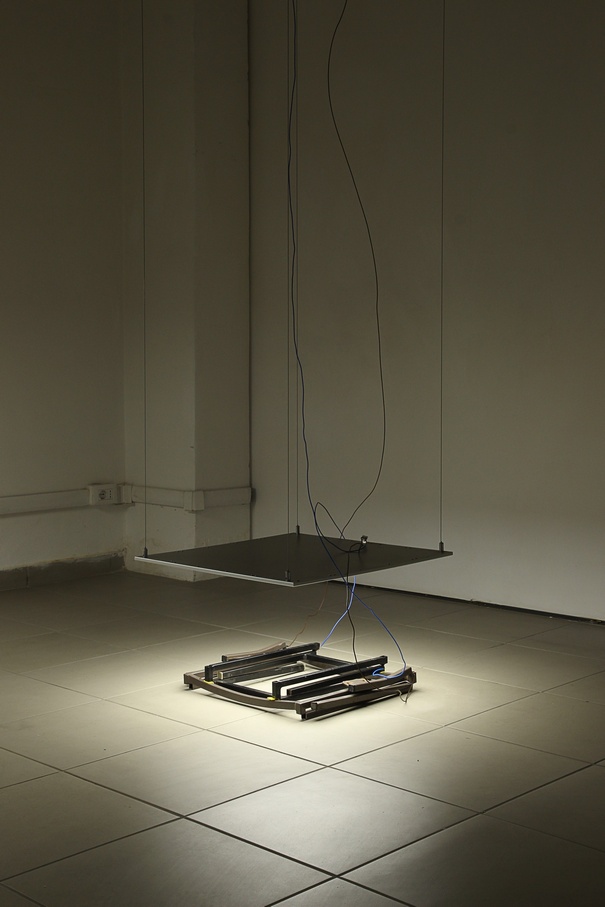
Stray currents #4, 2017, chair structure, LED-panel (cm 59,2 x 59,2), driver, cable, steel wire, cm 8 x 50 x 43,5 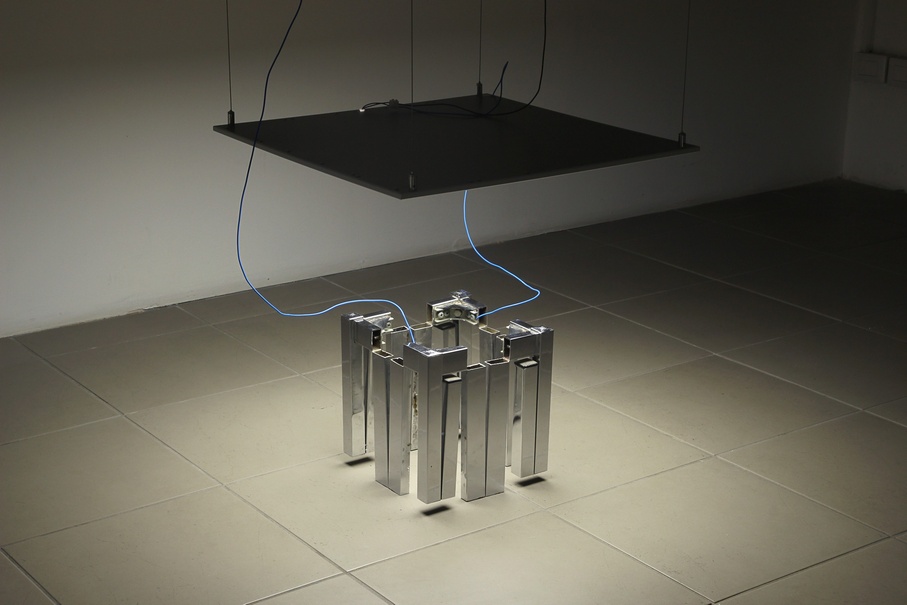
Stray currents #5, 2017, table racks, LED-panel (cm 59,2 x 59,2), driver, cable, steel wire, cm 29 x 27,4 x 26,5
The Gallery Apart is proud to present STRAY CURRENTS, the third solo show hosted in the Gallery’s spaces by Florian Neufeldt, German artist based in Berlin. Neufeldt carries on his research on the relationships between architectures, objects and matter, a path based on the idea of space, particularly with regard to mental space. The works by Neufeldt, indeed, are the result of a process of deconstruction and reconstruction which mostly takes place at thought level, starting from the evocative impressions offered to the artist by the expressive potential he himself sees in imagining the transformations to which he submits the objects used as starting points for his sculptures.
The objets trouvés that make up the artist’s imaginary are not collected, selected and used as found objects, but as matter capable of being transformed. Neufeldt is interested in the identity of the selected object and in the identity of the new shape he donates to that object, identities that are linked by a line differential which saves the memory of the previous object and, at the same time, creates a new shape provided with a strong power of abstraction. They are two halves of the same whole that finds its completion first in the visual and then in the mental perception. And this creates a vicious circle: the work comes to life in the artist’s mind and passes through the transformation of the matter, it is captured by the beholders’ eye to end its journey in their mind.
STRAY CURRENTS deals indeed with the way everyday use objects are perceived, particularly exploring their relationship with energy, in the form of electric energy, when they are processed and modified so as to become conductor devices throughout which current flows, and which partly is dispersed into the environment. The works on display are connected with the Gallery’s electrical system, so that the activation or deactivation of the electrical current directly influences their essence as inert objects, that is their being conductors. The work is therefore activated in this function of energy conduction, in a symbolic and also material sense.
Alongside the sculptures, Neufeldt arranges a series of black and white photographic images originated from the transformation of objects (chairs) and from their use as conductors of energy. The artist, in this case as well, starts from the sculptures through which electricity flows, electricity that goes to the projector in order to throw the image on the wall. After having photographed the sculptures, these are given back to their original shape and function as chairs. At this point the photo captures the sculptures to which the artist assigns an ephemeral destiny, although renewed by using seats and seatbacks created with insulating material. The outcome is a hybrid artwork, since each picture contributes to compose along with the chair a complete work that involves and includes in itself sculpture, photography and video. A practice that highlights the importance of the art-making process to the artist in order to underline the element that characterizes its genesis: thought.
The Gallery Apart è orgogliosa di presentare STRAY CURRENTS, la terza personale in galleria di Florian Neufeldt, artista tedesco di stanza a Berlino. Neufeldt prosegue la sua ricerca intorno ai rapporti tra architetture, oggetti e materia, un percorso che si fonda sulla concezione dello spazio soprattutto in termini di spazio mentale. Le opere di Neufeldt, infatti, sono la risultante di un processo di decostruzione e ricostruzione che avviene anzitutto a livello di pensiero, a partire dalle suggestioni fornite all’artista dalle potenzialità che egli intravede nell’immaginare le trasformazioni a cui sottopone gli oggetti utilizzati come basi di partenza per le sculture.
Gli oggetti di scarto che compongono l’immaginario di riferimento dell’artista non sono raccolti, selezionati e utilizzati come oggetti trovati, bensì come materia suscettibile di trasformazione. A Neufeldt interessa l’identità dell’oggetto prescelto e quella della forma nuova che egli dona all’oggetto stesso, identità che sono unite da una linea differenziale che salva il ricordo dell’oggetto di partenza e nel contempo crea una nuova forma dotata di una forte valenza di astrazione. Sono due metà di una unità che trova completamento nella percezione prima visuale e poi mentale. Il che crea un circolo virtuoso: l’opera nasce nella mente dell’artista, transita per la trasformazione della materia, viene catturata dallo sguardo dello spettatore per concludere il suo viaggio nella mente di quest’ultimo.
STRAY CURRENTS concerne appunto il modo in cui vengono percepiti gli oggetti d’uso comune, con particolare riferimento alla relazione che essi intrecciano con l’energia, sotto forma di energia elettrica, nel momento in cui vengono trattati e modificati in modo da divenire dispositivi conduttori attraverso cui far correre un flusso di elettricità che in parte si disperde nell’ambiente esterno. Le opere esposte sono direttamente collegate all’impianto elettrico della galleria, cosicché l’attivazione o la disattivazione della corrente elettrica influisce direttamente sulla loro essenza di oggetti inerti ovvero conduttori. L’opera viene dunque attivata in questa funzione di conduzione di energia, in senso simbolico ma anche in senso materiale.
Alle sculture Neufeldt affianca una serie fotografica in bianco e nero che trae origine sempre dalla trasformazione di oggetti (sedie) e dal loro utilizzo come conduttori di energia. L’artista parte anche in questo caso da sculture attraverso le quali viene fatta transitare l’energia elettrica che alimenta il proiettore che rimanda l’immagine sul muro. Dopo averle fotografate, le sculture vengono riportate alla loro forma e funzione originaria di sedie, seppure rinnovate con il ricorso a sedute e schienali realizzati con materiale isolante. Ne derivano opere ibride, giacché ogni fotografia contribuisce a comporre con la sedia di riferimento un’unica opera che coinvolge e racchiude in sé scultura, fotografia e video. Un incedere che sottolinea quanto importante sia per l’artista l’aspetto processuale della formazione dell’opera al fine di evidenziarne l’elemento che ne caratterizza la genesi: il pensiero.
share on